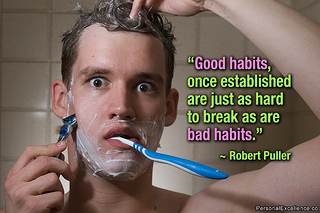 Perhaps the most important requirement for newcomers to community engagement is development of a new perspective, a new way of thinking that incorporates awareness of community into all their work. This is a frame of reference that places interests of the public high enough in unconscious thought processes that they influence creative choices. It is a perspective that grows out of belief, commitment, and practice. Belief and commitment are essential, but skill comes from practice. There is a reason this is referred to as a “habit” of mind.
Perhaps the most important requirement for newcomers to community engagement is development of a new perspective, a new way of thinking that incorporates awareness of community into all their work. This is a frame of reference that places interests of the public high enough in unconscious thought processes that they influence creative choices. It is a perspective that grows out of belief, commitment, and practice. Belief and commitment are essential, but skill comes from practice. There is a reason this is referred to as a “habit” of mind.
New circumstances, new ways of being in the world lead to new ways of thinking. When I began blogging I was amazed to see how quickly everything became subject matter. (Desperation is a wonderful incentive.) I’ve done pieces on minor league baseball games, airplane pilots’ announcements, even Jimmy Buffett concerts. My wife now rolls her eyes when I say, in wildly inappropriate contexts, “I can write about that for the blog.” Similarly, two years ago I launched a business after years as a college professor with a small but dependable paycheck. The loss of a salary was disconcerting, but the inexorable need to fund rent and salaries was unnerving. I discovered my perspective had been radically transformed when I found myself at the grocery store trying to imagine how much money the owners had tied up in grocery carts. In both cases, the thoughts I thought were radically new not because I was trying to think differently but because the things on which I focused had been changed by my new view of the world.
If community engagement demands new thought patterns, how are they formed? It is done by maintaining focus on community interests in every aspect of the work. The question “How can the lives of the people of our community made better by the work we do?” is a touchstone on which to reflect. Answers to the question require awareness of what things would actually make lives better (and this grows out of building relationships in communities), seeing the arts organization as a player in working on those things, and practice in thinking how the organization’s programmatic choices could be of service. Certainly, ultimate success requires skill in implementation, but arts organizations are adept at presenting programming, even if doing so in new or unusual partnerships requires additional skill building.
When programmatic ideas that support enhanced community life begin to spring to mind unbidden, the habit is well on its way to completion. When arts organization staff members find themselves curious about whether their presentation of
- Vivaldi’s The Four Seasons might serve the interests of their friends at the Sierra Club;
- Oliver (or a staging of Oliver Twist) might facilitate awareness of homeless families and children;
- Appalachian Spring would be useful to educators teaching U.S or (depending on the city involved) local history; or
- An exhibition of “outsider art” could help illuminate issues of power and privilege or insider/outsider status,
they have achieved a community oriented perspective. (Please do not put too much stock in these examples. They are mere off-the-cuff illustrations.)
Of course, simply having such ideas does not mean they should be implemented. Unilaterally inflicting programming upon a community is not good engagement practice. Rather, the adept arts organization would discuss the possibilities with appropriate potential partners (with which, ideally, they would already have relationships). If the concept were deemed to have promise they would work together to develop it.
Believe, commit, practice, . . . and think anew.
Engage!
Doug
Photo:![]() Some rights reserved by Celestine Chua
Some rights reserved by Celestine Chua
